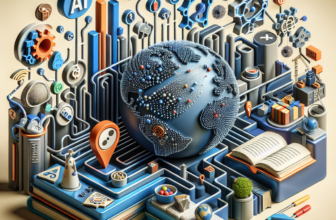The Impact of AI on Education: Bridging the Learning Gap

The Impact of AI on Education: Bridging the Learning Gap
In recent years, the integration of artificial intelligence (AI) in education has gained significant traction, promising to revolutionize the way students learn and teachers teach. AI has the potential to bridge the learning gap by providing personalized learning experiences, automating administrative tasks, and augmenting classroom instruction. This article delves into the impact of AI on education and how it can address educational challenges to ensure an inclusive and effective learning environment for all students.
I. Personalized Learning Experiences
One of the key benefits of AI in education is its ability to deliver personalized learning experiences to students. By analyzing a student’s learning patterns, AI can create custom-tailored lesson plans and adaptive learning paths that cater to a student’s individual needs and pace of learning. This ensures that every student receives the support and guidance they require to excel in their studies, regardless of their learning style or abilities.
Moreover, AI-powered educational platforms can offer real-time feedback on student performance, identifying areas of strengths and weaknesses and providing targeted interventions to address learning gaps. This level of individualized attention and support can significantly enhance student engagement and academic outcomes, leading to better retention and mastery of concepts.
II. Automating Administrative Tasks
Another significant impact of AI on education is its ability to streamline and automate administrative tasks, freeing up educators’ time to focus on delivering high-quality instruction. AI can handle routine administrative duties such as grading assignments, managing student records, and scheduling, reducing the burden on teachers and allowing them to devote more energy to teaching and mentoring their students.
By automating these repetitive tasks, AI can also help schools and educational institutions operate more efficiently and cost-effectively, ultimately benefiting both educators and students. This can lead to a more productive and satisfying work environment for teachers, enabling them to better support their students and foster a positive learning experience.
III. Augmenting Classroom Instruction
AI can also augment classroom instruction by providing teachers with tools and resources to enhance their teaching methods and create more interactive and immersive learning experiences. For example, AI-powered educational technologies can offer virtual simulations, adaptive learning games, and interactive tutorials that engage students and deepen their understanding of complex concepts.
Additionally, AI can support teachers in identifying students who may be struggling and require additional support, helping them to tailor their instruction and interventions to meet individual student needs. By leveraging AI, educators can create a more inclusive and accessible learning environment that supports diverse learning styles and abilities, ultimately contributing to improved student outcomes.
IV. Addressing Educational Challenges
AI in education has the potential to address various educational challenges, including the disparities in learning outcomes among students, the need for personalized learning approaches, and the demand for more efficient and effective teaching methods. By leveraging AI technologies, educators can create more equitable and inclusive learning environments that cater to the diverse needs of all students, ultimately bridging the learning gap and fostering a more successful and fulfilling educational experience for all.
Moreover, AI can also help address the shortage of qualified educators and the rising demand for quality education, by providing scalable and accessible educational resources that can reach a wider audience of students. This can significantly expand the reach of education and ensure that all students have access to high-quality learning opportunities, regardless of their geographic location or socioeconomic status.
In conclusion, the impact of AI on education is poised to revolutionize the way students learn and teachers teach, by bridging the learning gap, providing personalized learning experiences, automating administrative tasks, and augmenting classroom instruction. As AI continues to evolve and integrate into educational settings, it is crucial for educators, policymakers, and stakeholders to embrace and harness the potential of AI to ensure an inclusive and effective learning environment for all students.
FAQs
1. What are some examples of AI-powered educational technologies?
– Some examples of AI-powered educational technologies include adaptive learning platforms, intelligent tutoring systems, virtual reality simulations, and chatbots for student support.
2. How can AI personalize learning experiences for students?
– AI can personalize learning experiences for students by analyzing their learning patterns, creating custom-tailored lesson plans, providing adaptive learning paths, and offering real-time feedback on student performance.
3. What are the benefits of automating administrative tasks with AI?
– Automating administrative tasks with AI can free up educators’ time, reduce the burden of routine duties, and help educational institutions operate more efficiently and cost-effectively.
4. How can AI support teachers in identifying struggling students?
– AI can support teachers in identifying struggling students by analyzing student data and performance metrics, providing insights into areas of strengths and weaknesses, and enabling teachers to tailor their instruction and interventions to meet individual student needs.






